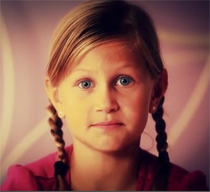As you are preparing to make decisions about 2017 funding for the National Institute of Health (NIH) please consider a few things.
- Childhood cancer is the #1 disease related killer of kids in the U.S.
- The incidence of childhood cancer has been steadily rising over the past several decades
- Currently 1 in 285 children will be diagnosed with cancer before they reach the age of 20
- 20% of children diagnosed are terminal on diagnosis
- 60% of children diagnosed suffer life altering impacts of treatment
- 95% of survivors will suffer serious health impacts before they reach the age of 45
Despite the fact that thousands of children are suffering and dying each year, the NIH continues to defend its position of basically ignoring childhood cancer research. They say that childhood cancer is rare, they hold childhood cancer research hostage – telling Congress they could do more with more funding.
NIH supports their position by using a 90% cure rate statistic for one childhood cancer to distort the entire childhood cancer picture. Ironically, this statistic is related to a childhood cancer that has been the recipient of the majority of childhood cancer research since the 1960s. The picture is not the same for other childhood cancers where there has been little to no investment, these childhood cancers continue to kill and maim our children.
NIH recognizes that childhood cancers and adult cancers are different. They acknowledge that studying adult cancers does not result in treatment options for kids, but often the opposite is true. In spite of this awareness, we continue to use downsized adult protocols to treat the majority of childhood cancers, often with devastating impacts because there are few, if any, other options. The lack of research in childhood cancer means there are few pediatric protocols, treatments and drugs. We need significant Federal investment in childhood cancer research now to address the growing incidence of cancer, to reduce tremendous costs to kids and society as a result of secondary impacts of childhood cancer treatments, and most importantly to give kids cures they deserve.
Congress has been aware of the steadily rising rate of cancer in children for the past couple of decades. Congress passed the Children’s Health Act of 2000 as a direct result of government’s concern about the steady increase in childhood diseases. Title XI of this act required the Secretary of HHS through the NIH to study risk factors for childhood cancer and improve outcomes among children with childhood cancers and secondary conditions. Title X created the Pediatric Research Initiative requiring the Secretary to establish an initiative at NIH conducting and supporting research directly related to diseases in children. Since childhood cancer is the #1 disease related killer of children in the U.S., it seems reasonable to assume that the Pediatric Research Initiative would be fostering childhood cancer research and increasing pediatric clinical trials. This initiative has been funded by Congress for the last decade. It is difficult, if not impossible, to understand the outcomes. The public deserves transparency in order to understand how HHS has complied with this Act.
The Children’s Health Act authorized NIH to conduct the National Children’s Study (NCS) which was funded for over a decade at a cost of over $1 billion to taxpayers. One might wonder, at the possibilities if there might now be more pediatric treatments for childhood cancer if these funds had gone to childhood cancer research instead of the administrative debacle that was the result of this taxpayer funded investment. Where is the accountability? In 2014, the same Director of NIH that provided oversight of the NCS, cancelled the study discounting advice of internal and external panels that completed reviews of the study. Congress allowed that same Director to provide a plan for reallocation of funds appropriated for the NCS. In the private sector, if a CEO mismanaged $1 billion, I think it would be fair to say that the CEO would not be making decisions about funding investments moving forward. It seems that the reallocation might have gone directly to childhood cancer research since this was one of the original intentions of the legislation but as far as we know, childhood cancer research did not receive any of the reallocated funds. Despite much external pressure on NIH over the past couple of year, NIH seems to dig in its heels even more about their position that childhood cancer is rare.
Congress has been asking questions about how NIH sets priorities. Over 20 years ago Congress passed legislation requiring agencies to develop strategic plans that helped agencies set priorities, identify goals, objectives, and outcomes of funding decisions. Legislation intended to improve public confidence in government, provide accountability and transparency to the public about investment of taxpayer dollars. In 2014 Congress required GAO to investigate how NIH set priorities and that same year required that NIH complete an overarching strategic plan by December 2015. It is hard to understand why an agency with a $30 billion budget does not have a comprehensive strategic plan. NIH goals, priorities, and transparency seems to be obscured by the giant HHS budget. Stakeholders waited patiently for NIH to conduct stakeholder outreach as they were developing the strategic plan but that outreach was limited to a 3 week comment period at the end of July. It feels like the outreach was only a façade, going through the motions without considering stakeholder thoughts.
How does NIH set priorities with the $30 billion provided by taxpayers? NIH, our country’s largest research organization estimated funding for 2016 (RCDC) shows
- Drug Abuse = $1 billion
- Obesity = $1 billion
- Alcoholism = $0.5 billion
- AIDS = $3 billion
We understand the importance of these issues, but it is difficult for taxpayers to understand how these research investments would be of a higher priority than the childhood cancer that is killing our kids year in and year out. Let me say again, childhood cancer is the #1 disease related killer of kids in the U.S.
Since 2007 Congress has provided report language and encouraged NIH to increase funding for childhood cancer research. Around this time NIH began to show that childhood cancer research received around $180 million per year. Even this amount is not a true representation of childhood cancer research. The number is derived by asking grant recipients to denote any percentage that might benefit childhood cancer and that is calculated as childhood cancer research.
NIH may continue to defend their position in spite of devastating impacts to kids and families, and society as a whole. Statistics can be twisted and turned to assist the defense, but there is no doubt that the incidence of childhood cancer is increasing. We need significant investment of Federal research dollars into childhood cancer research now – the kids are waiting. Members of Congress we ask you to stand up for children and make childhood cancer research a legislative priority in the NIH budget.
Sincerely,















This is all very eye-opening but very confusing. My question is: is there a place to donate for JUST childhood cancer where the majority of donations WILL go to that cause?
Thank you Kay, there are several organizations to choose from that are involved in only childhood cancer research. The Coalition Against Childhood Cancer has 87 childhood cancer organizations that are exclusive to this cause. I suggest you contact them at
https://cac2.org and they can help you find an organization that meets your interest.
Have read above & it is very eye-opening yet confusing. My question is: is there a place to donate JUST for childhood cancer research where a MAJORITY of the donations are used for that?
Thank you, there are several organizations to choose from that are involved in only childhood cancer research. The Coalition Against Childhood Cancer has 87 childhood cancer organization members. Many are dedicated to investing in promising research and therapies for childhood cancer. I suggest you contact them at https://cac2.org and they can help you find an organization that meets your interests.